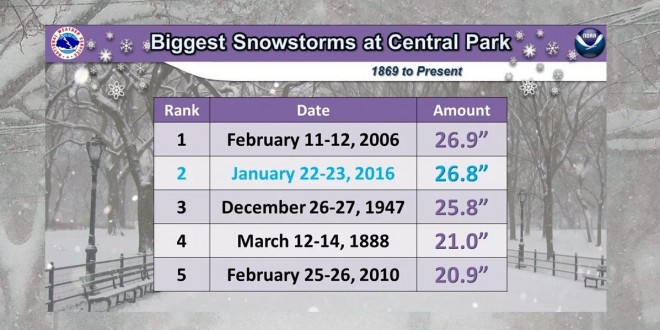I knew this was going to be much worse than the 8 to 12 inches of snow expected, and here's how:
Human beings have a major tendency towards psychological bias, and this season we were all getting way too comfortable with a warm, mild, and snow-less winter.
Every day, our brains lead us to overestimate and underestimate all sorts of events, outcomes, and things. These miscalculations and false expectations are not necessarily our fault, since they are the result of very powerful cognitive biases and errors ingrained in human thinking. These natural biases are many times evolutionary advantages that help us quickly deal with or cope with daily situations, but they also cause many problems and lead us astray.
In this case, regarding the blizzard, most weather forecasts were subject to "recency bias". Recency bias, as its name implies, leads to an over-reliance on recent events, causing people to expect future outcomes to be similar to those of the recent past.
For example, after a terrible recession, such as the Great Recession of 2007-2009, most investors and people in general were overly concerned with and overly expectant of another recession. Even if another recession was not imminent, most investors became so fearful of what happened in recent past that their recent memory had a disproportionately large effect on their thinking. Case in point, with so much fear of another recession since 2009, there actually has not been an official recession in the US for over 6 years! Recency bias in this case may have led millions of people to miss out on one of the greatest Bull Markets in history. Prudent investor behavior is important, but in this case it was taken too far.
There are many varying examples of recency bias, which is also related to "Availability Bias" and "Representativeness Bias". The common thread between these biases is that an individual overestimates the likelihood or probability of something occurring (or not occurring) based on recent past or how easily something comes to mind. For example, people tend to be much more afraid of a shark attack than a car accident because a shark attack elicits vivid images and great fear; however, in reality, a car accident is much more likely.
Back to the blizzard --
With such a warm and mild winter leading up to January 2016, most people had become too accustomed to the irregular weather. Instead of expecting the normal winter weather to eventually arrive, most people assumed it would continue.
Even the weather forecasters, supposed "experts", were completely off the mark. With one of the biggest blizzards of all-time barreling its way toward the east coast, the forecasts called for only 8 to 12 inches of snow.
Based on the snowless winter leading up to the blizzard, the forecasters were strongly biased by their recent observations - that a severe snowstorm was extremely unlikely. How could they expect a record-setting snowfall when we haven't even seen 3 inches of snow all winter? However, because of their bias, their forecasts severely underestimated the upcoming storm.
This is how I knew we were about to get much more than 8 to 12 inches:
I was very aware that the winter was much warmer than usual and that the nonexistent snowfall was completely out of the ordinary. Unless this was going to go down as one of the warmest and most irregular winters of all time, I knew we would have to experience a major storm at least once. In my mind, winter was just about to get started.
So when I heard of the upcoming snow, I recognized the potential for most weather forecasters to be biased by the recent mild weather. I knew that many forecasters would have a problem with accepting that such a monster storm was approaching. Even if their forecasts pointed to 20 inches of snow, I expected many forecasters to minimize or reduce their numbers. A weather forecaster wasn't likely to predict 20 inches of snow because he or she would look foolish if it turned out to be incorrect; with such a mild winter, why would the forecaster go out on a limb and predict a major storm? It would have been the correct thing to do, but unlikely to be done.
Once I heard that forecasts were calling for a significant 8 to 12 inches, I knew that at the very least we were getting a disruptive storm. Furthermore, I knew that if forecasters were willing to predict nearly a foot of snow, the possibility of a major blizzard was high.
Hours before it had even started to snow, I told my wife and brother-in-law (who was staying by us with his girlfriend for the weekend) that we were probably about to be stuck indoors for the entire weekend. Since most people can't even fathom a blizzard right now, I said, the forecasts are severely underestimating the amount of snow we are about to see.
And then a record-setting blizzard showed up.




No comments:
Post a Comment